Abstract
Monkeys require a considerably larger number of trials to bring responding under the control of the location of an auditory stimulus than cats, rats, and bats with the same experimental procedures. The present experiment sought to determine the conditions necessary for rapid acquisition of control of responding by location of noise and tone bursts in the monkey. Monkeys were run in an enclosure that contained four loudspeakers and four manipulanda. Two conditions were used in training. In the adjacent condition, a stimulus (noise or tone burst) was presented through one or other of two speakers and a response on the manipulandum adjacent to the speaker was reinforced with food. In the nonadjacent condition, a stimulus was presented through one of two speakers and a response on a manipulandum remote from the speaker was reinforced with food. Acquisition of control was measured by change in the percentage of reinforced responses during training. In the adjacent condition, responding came under control of location within zero to three sessions. In nonadjacent conditions, the animals required 14 to 20 sessions to come under control of location. These latter numbers are comparable to those reported in the literature for localization discrimination in monkeys.
Full text
PDF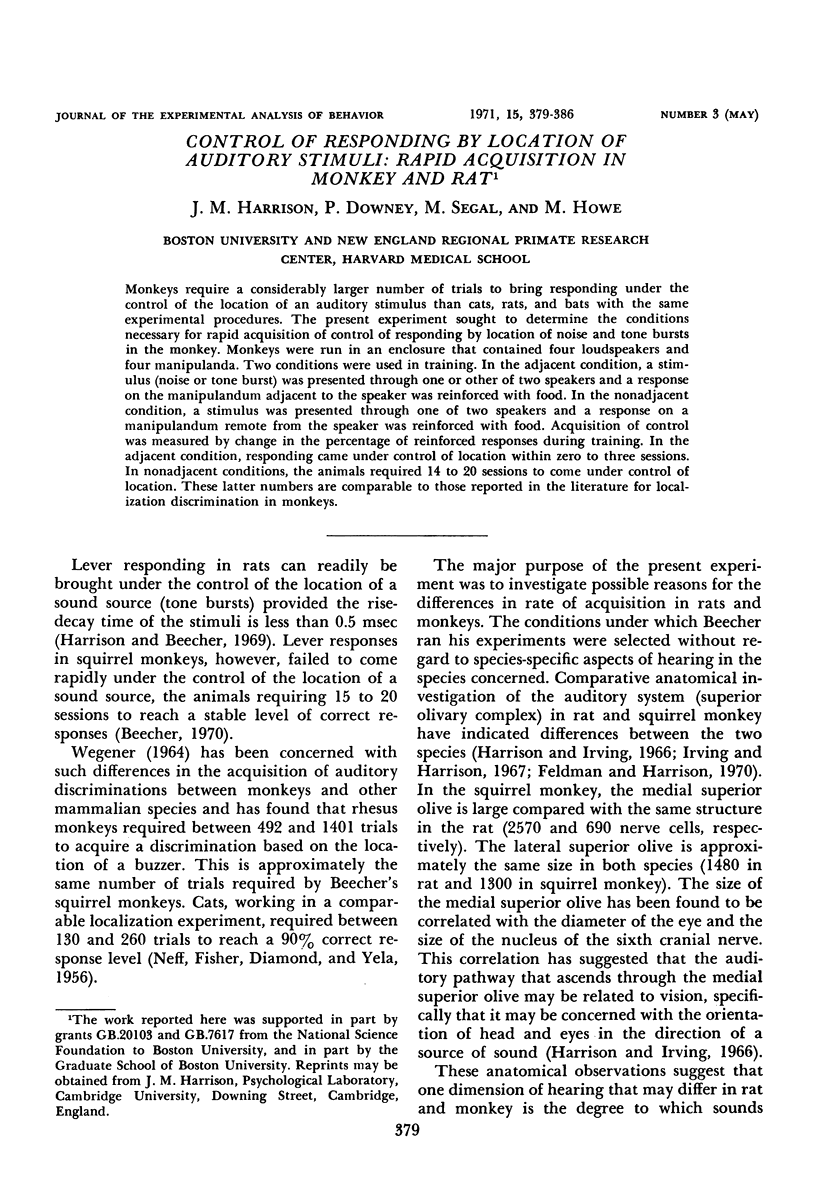
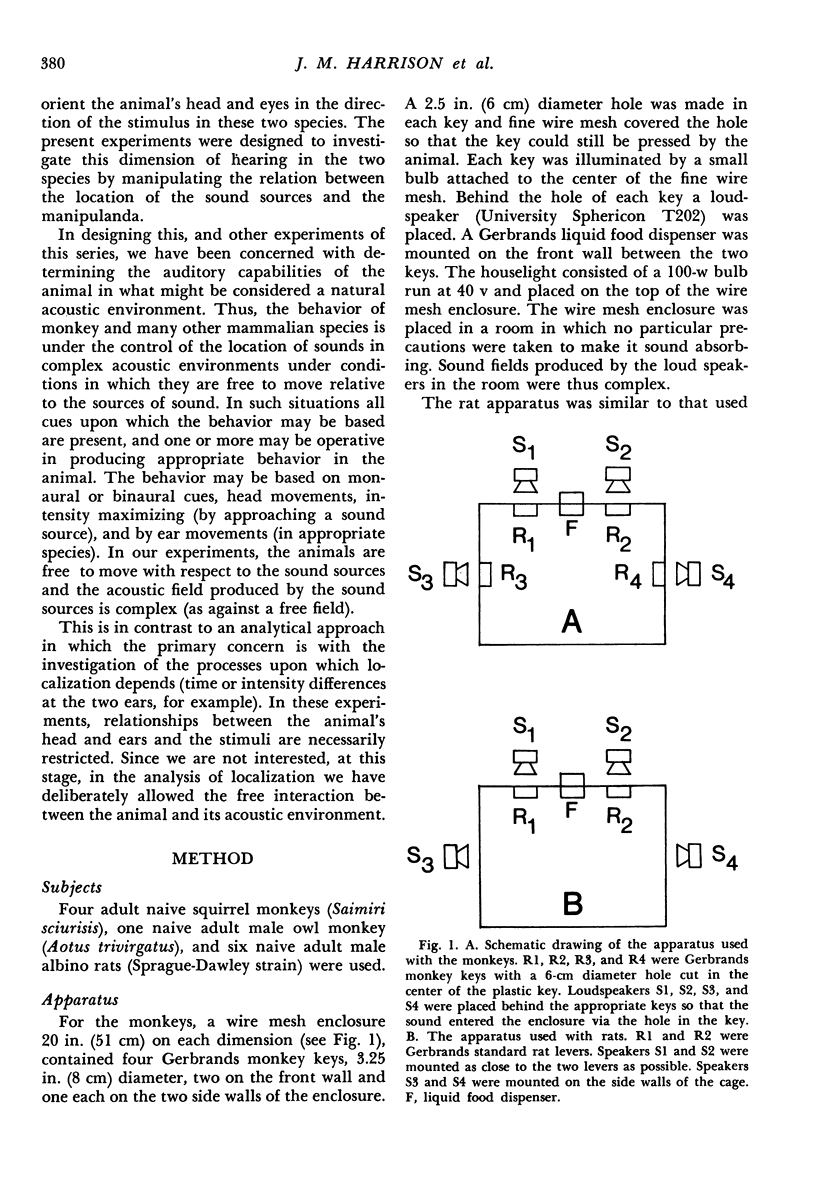
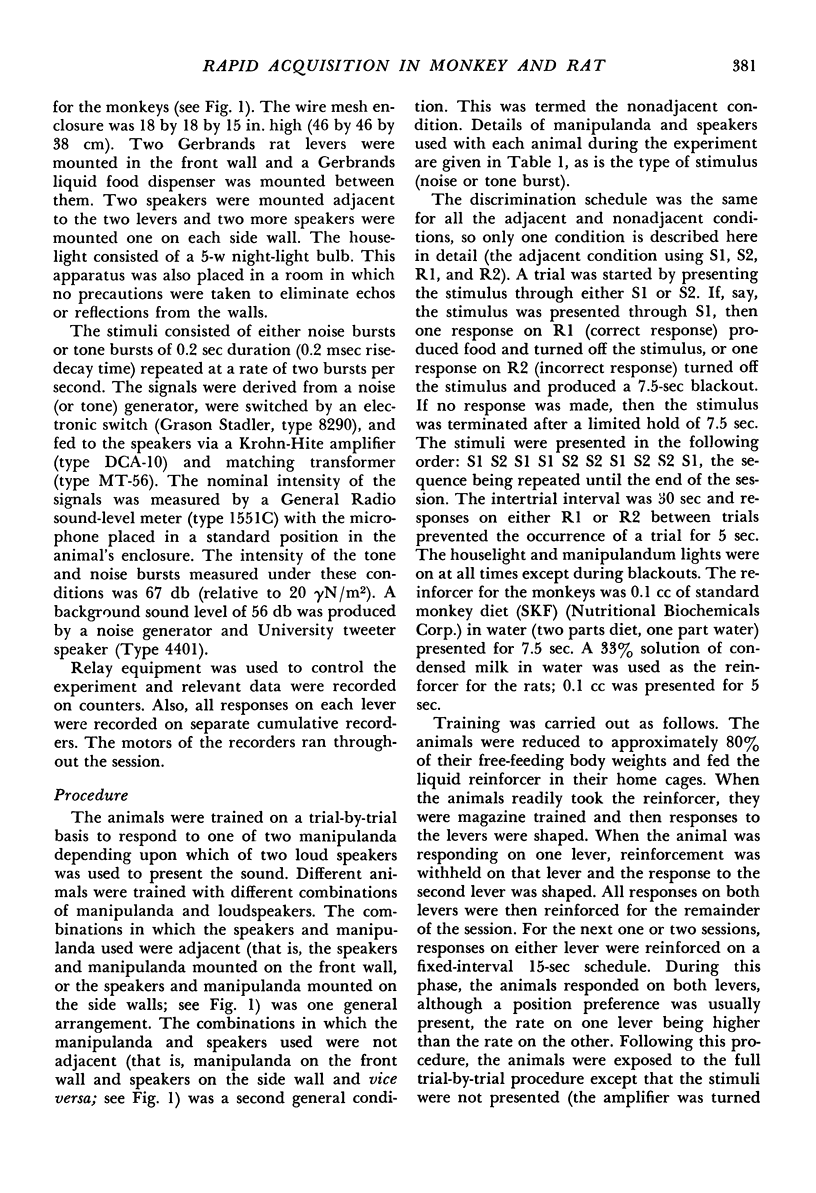
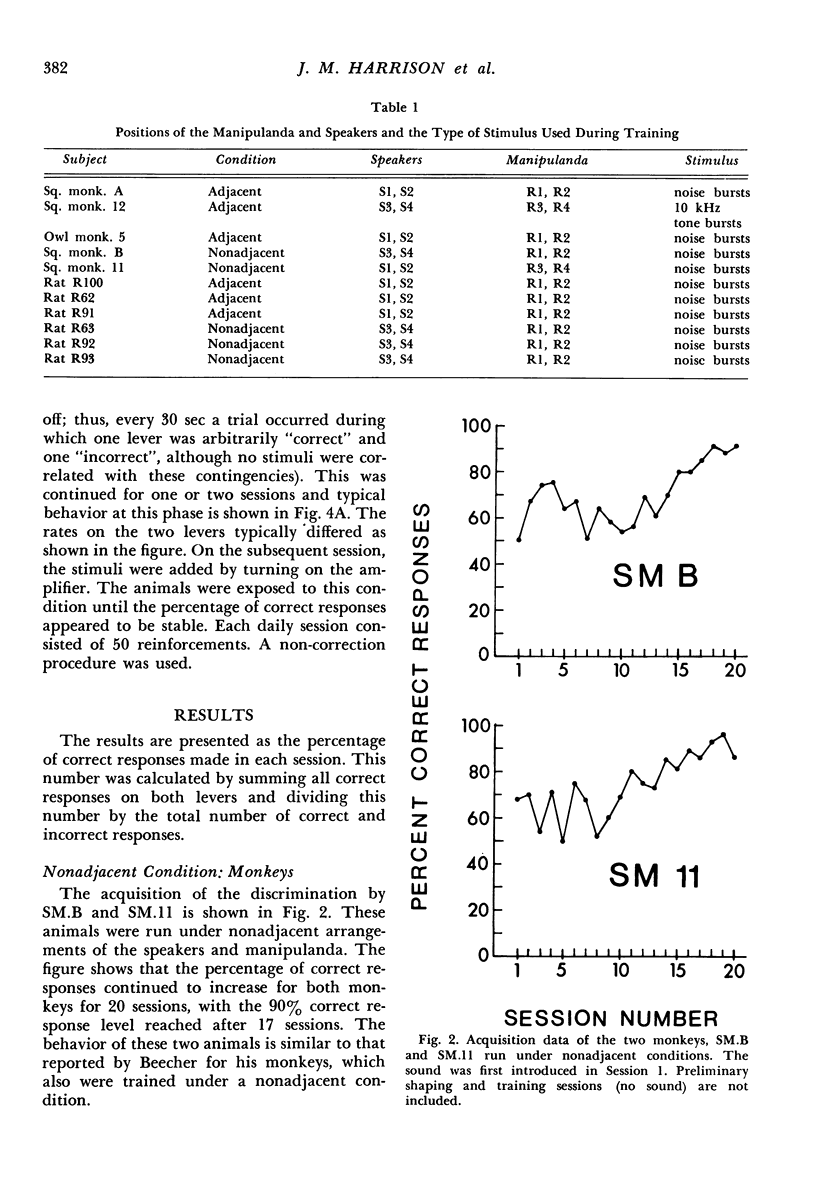

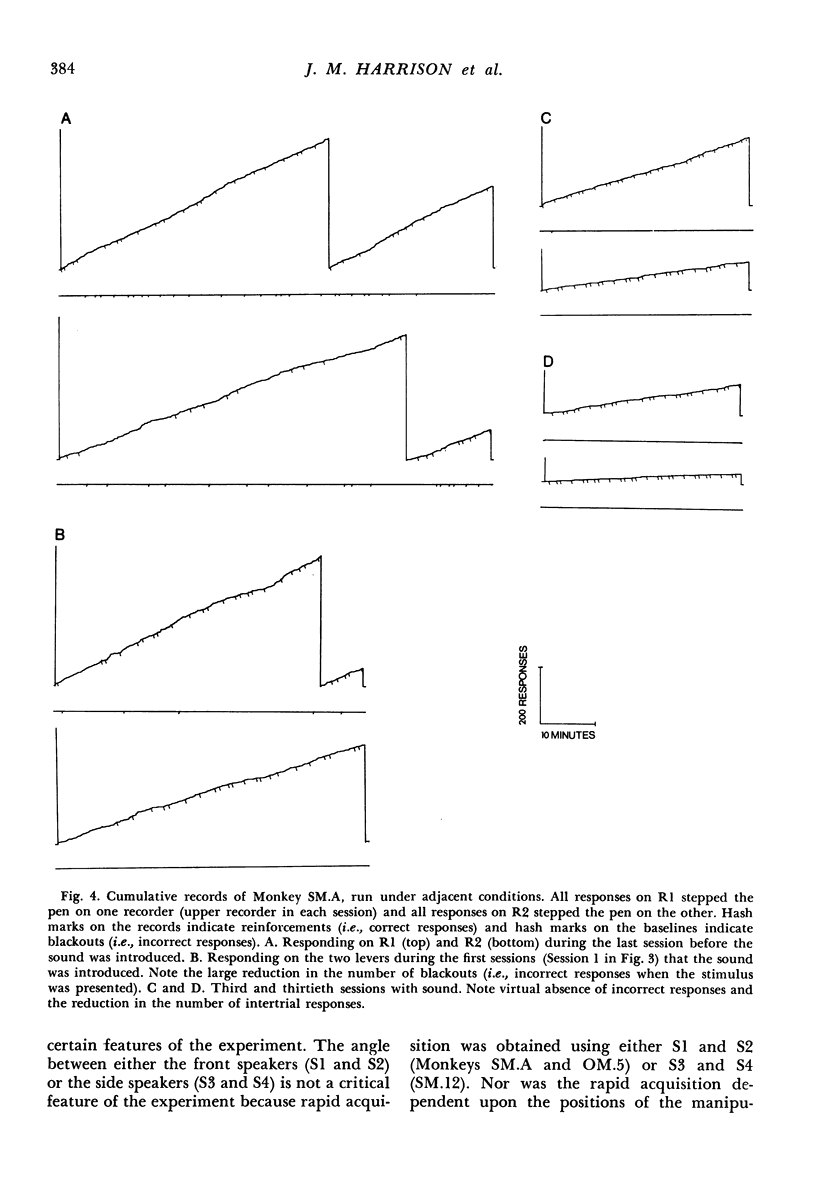
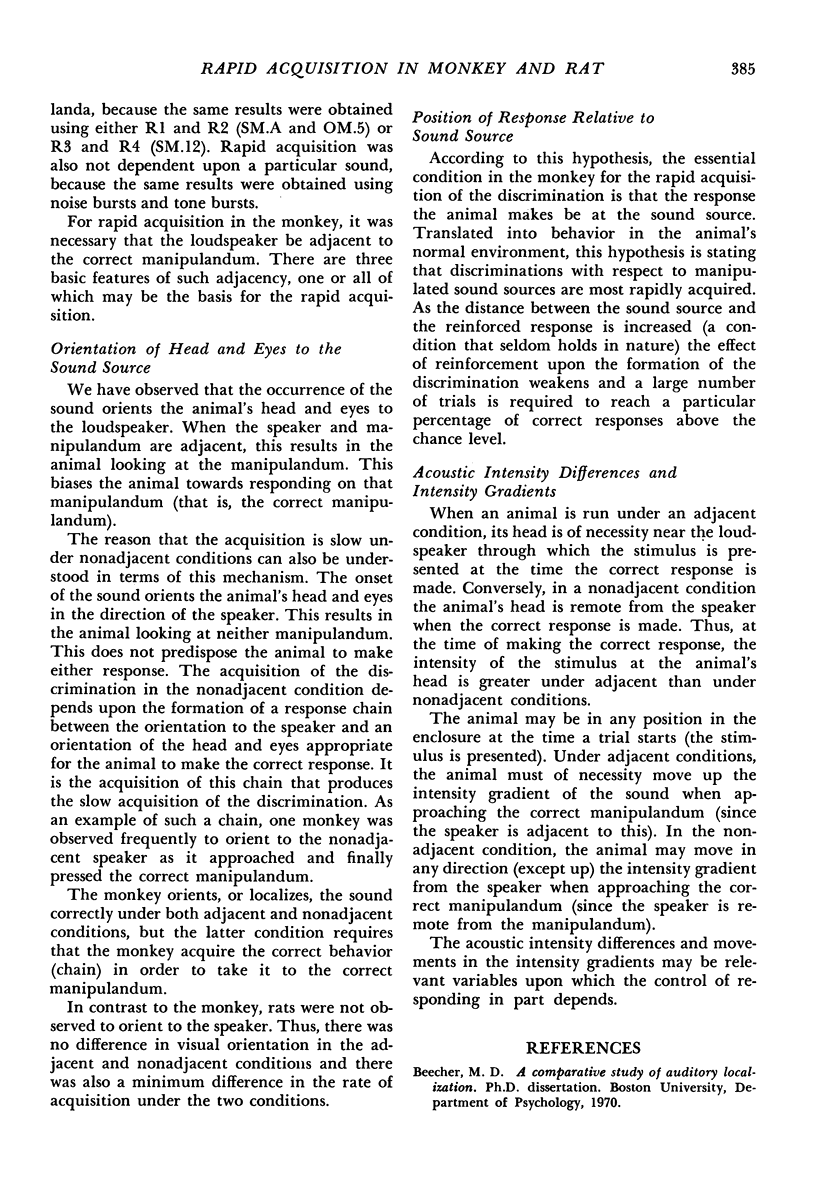
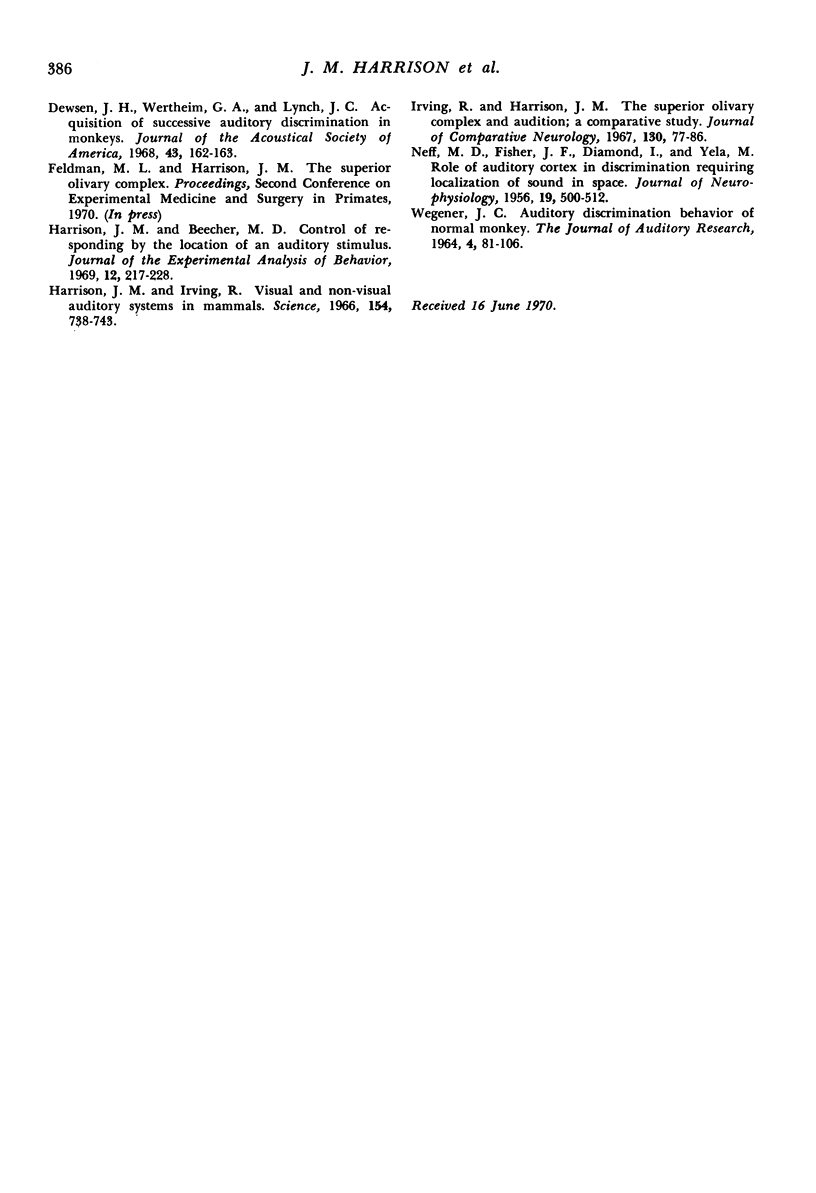
Selected References
These references are in PubMed. This may not be the complete list of references from this article.
- DIAMOND I. T., FISHER J. F., NEFF W. D., YELA M. Role of auditory cortex in discrimination requiring localization of sound in space. J Neurophysiol. 1956 Nov;19(6):500–512. doi: 10.1152/jn.1956.19.6.500. [DOI] [PubMed] [Google Scholar]
- Dewson J. H., 3rd, Wertheim G. A., Lynch J. C. Acquisition of successive auditory discrimination in monkeys. J Acoust Soc Am. 1968 Jan;43(1):162–163. doi: 10.1121/1.1910746. [DOI] [PubMed] [Google Scholar]
- Harrison J. M., Beecher M. D. Control of responding by the location of an auditory stimulus: role of rise time of the stimulus. J Exp Anal Behav. 1969 Mar;12(2):217–227. doi: 10.1901/jeab.1969.12-217. [DOI] [PMC free article] [PubMed] [Google Scholar]
- Harrison J. M., Irving R. Visual and nonvisual auditory systems in mammals. Anatomical evidence indicates two kinds of auditory pathways and suggests two kinds of hearing in mammals. Science. 1966 Nov 11;154(3750):738–743. doi: 10.1126/science.154.3750.738. [DOI] [PubMed] [Google Scholar]
- Irving R., Harrison J. M. The superior olivary complex and audition: a comparative study. J Comp Neurol. 1967 May;130(1):77–86. doi: 10.1002/cne.901300105. [DOI] [PubMed] [Google Scholar]


